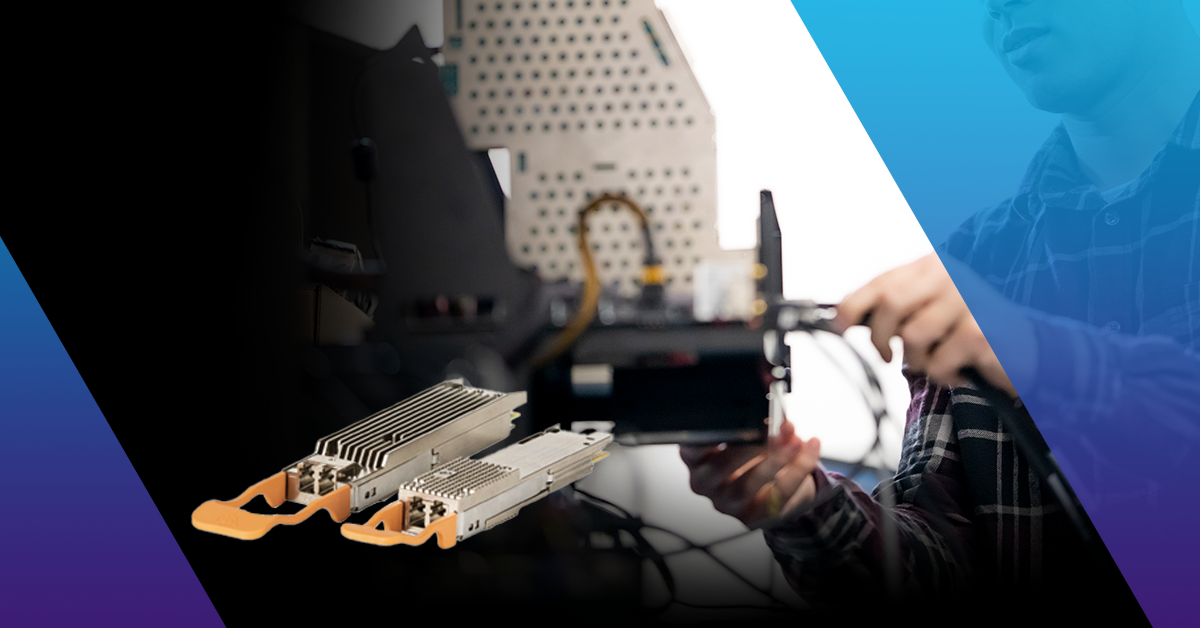7 Ways to Improve Business Services Testing in 2021

Ethernet business services including cell site backhaul, internet access, and all the flavors of virtual private networks are among the most profitable and fastest growing services at many communications service providers. The best operations teams take great care to ensure business services are high quality on delivery to eliminate costly customer disputes. Here’s a list of practical steps that any CSP operations team can take to improve the quality and consistency of business services in 2021.
- Test your optics – Nearly all business services with rates of 1G through 100G use pluggable

Optics, transceivers, modules; call them what you want but test them. optics to convert information from electricity into light. From time to time these components fail. An optic can fail for many reasons: physical damage, static discharge, manufacturing issues, or just getting dust in the connector. Testing optics modules in isolation either prior to initial installation or as a troubleshooting step eliminates any question about whether they are the source of a problem. Best practice tests include a transmit optical power measurement and bit error rate in loopback (with variable transmit timing as a stress test). For DWDM optics the addition of wavelength verification ensures proper operation through optical multiplexors.
For more on this: Self Optics Test Using T-BERD/MTS 5800 (quick card)
- Start Burst Testing – Customer traffic is typically bursty, with several packets sent back-to-back

This snake was surprised by a burst. Don’t be a snake. due to the nature of TCP traffic. Unfortunately, traditional Ethernet testing (RFC 2544 and/or Y.1564) only uses constant bit rate traffic where the test packets transmitted are perfectly spaced. To ensure that a Committed Burst Size (CBS) service level agreement parameter is met, it is best to augment the constant bit rate traffic tests with a burst test where repeated bursts of line rate traffic can properly stress the network.
For more on this: Burst Testing Ethernet Networks (application note)
- Don’t Forget Layer 4/TCP – The predominant traffic from customer applications like web

Your customers web surf on Layer 4, so test it! browsing, file transfer, and video conferencing, that flows over business service networks uses TCP to ensure flawless end to end data transmission. The stateful nature of TCP, which provides the flawless transmission, has an unfortunate side effect of significantly slowing traffic speeds in the presence of packet loss, network congestion, or incorrect traffic shaping. When customers experience this slowdown, service providers start troubleshooting the lower layers, which reveal nothing if the problem is at TCP/Layer 4, which often goes untested. RFC 6349 provides a repeatable, standards-based test to identify if the network will support high quality TCP transmission and ultimately a high-quality customer experience.
For more on this: Experience Your Network As Customers Do (white paper)
- Stop Using Checklists – Installing business services and the related equipment takes multiple

Use technology, not lists. steps that are each critical to the quality of the service. When using printouts of checklists, occasionally, some steps get missed. Job Manager is a VIAVI tool built right into our test equipment that guides technicians through an easy step-by-step process so steps don’t get missed, like inspecting every fiber end face and measuring optical power levels. Even better, at the end of the install process Job Manager will create a single report with a summary of each test result, as well as all the details. You will never have to wonder exactly what was done again.
For more on this: Meet Your New Job Manager (infographic)
- Take Pictures of Your CPE – Network equipment supporting business services is almost

Photograph your work. Your future self will thank you. always installed at a premises controlled by the customer. This leaves CSP operations teams at the mercy of their customers to ensure that power, ventilation, and other environmental factors meet standards. Pictures of the conditions of the equipment, power supplies, and fiber management not only provide important documentation that the job was done right, but also encourage technicians to show off their craftsmanship amongst each other. Use the Mobile Tech iOS or Android app to add pictures to the Job Manager. Combining both tests and pictures in a single document creates a valuable troubleshooting resource for future reference.
For more on this: Save Time and Ensure Improved Network Services with Test Process Automation (application note)
- Stop Using USB Sticks – Test reports are often the only documentation CSP operations teams

When you use a USB stick you’re rolling the dice. have to prove that a business service has been installed properly. Common practice is to transfer reports first to a USB memory stick, then to a PC, and then email or store it in another system. Too often reports are lost or delayed in this manual process. Better methods of managing test reports are to send reports directly to cloud storage via StrataSync with a press of a button, or use the Mobile Tech app to share the report to email, a CRM tool such as Salesforce, or another messaging app like WhatsApp.
For more on this: Transform Test Procedures Using StrataSync Test Process Automation (case study)
- Deploy a Centralized Test Head – Business Services testing typically requires test equipment

A centralized test-head may be the missing piece of your testing strategy. on either end of the service – either for loopback or bi-directional generation of test traffic. In many cases portable test equipment on either end is the best choice, but this means that two technicians are tied up with testing. Installing remotely managed 10G or 100G test probes at centralized locations in the network, either at an Internet POP or an aggregation switch, reduces the demand on technician dispatches and provides a consistent far end device for all technicians testing in the field. Even better, advances in computing virtualization technology allow for specialized test virtual machines to be automatically deployed to any location with computing capability for example in a datacenter, a network location, or the customer premises, and be controlled remotely.
For more on this: Make Network Testing Easier With a Centralized Test Head (application note)
 Michael Bangert has over 20 years of experience in telecommunications networking with a primary focus on optical network transport. He has been at VIAVI for 8 years helping Service Providers optimize their deployment and testing of business services transport and wireless networks. Prior to VIAVI, Mike held positions as sales and marketing with PMC-Sierra (now Microsemi). He has participated on numerous industry panels around 5G and high-speed network technology trends. He received his B.S. in Electrical Engineering and M.B.A. from University of Notre Dame in Indiana.
Michael Bangert has over 20 years of experience in telecommunications networking with a primary focus on optical network transport. He has been at VIAVI for 8 years helping Service Providers optimize their deployment and testing of business services transport and wireless networks. Prior to VIAVI, Mike held positions as sales and marketing with PMC-Sierra (now Microsemi). He has participated on numerous industry panels around 5G and high-speed network technology trends. He received his B.S. in Electrical Engineering and M.B.A. from University of Notre Dame in Indiana.



